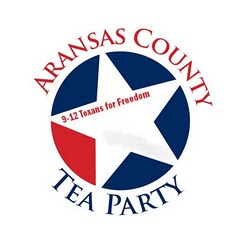From Politico
‘Tea Party’ for dummies
By CURT ANDERSON
I’m fed up with all the foolishness written about the tea party. Virtually all the analysis has been off base. Liberals don’t get it. Democratic political players mistakenly think they can use it against Republicans. And the Republican establishment is cowed and terrified.First, there should be a rule that no one can write about the tea party without attending events outside the Beltway. Here is what you would find: a mishmash of Americans who are a bit unusual yet oddly refreshing. There would be housewives with strollers, young people with edgy signs, old-timers with walkers, bikers with flags and Republican workers handing out literature that no one wants.
Like any political event, there would be smart people and dumb, well-intentioned folks and troublemakers, folks with their lives together and folks who need medication. There are clever signs and stupid signs.Sometimes emotions run high. I saw a confrontation last year at a tea party event in Madison, Wis., between an obnoxious young “protester,” wearing a “Feingold for Senate” T-shirt, and a grizzled Vietnam veteran. The protester was filling the air with expletives, so the vet came over and said he was going to shove his cane down the protester’s throat. Sadly, the protester immediately stopped exercising his First Amendment rights.
I love it when enlightened pundits observe that there are “crazy people” at these events. No kidding. Ever been to a Democratic or Republican convention? Plenty of attendees would not pass a CT scan. Ever been to a PTA meeting? There are crazy people in America, on your TV and in your neighborhood. You may even be one of them. Deal with it.
Republican leaders are grappling with the tea party phenomenon as we speak. While publicly genuflecting to the tea party, many are privately scared and embarrassed. What do its members want? Are they trying to take over? How do we deal with them? It’s the cause of much consternation on the D.C. cocktail circuit.
A little history: My first job in politics began in 1984. There was a different, yet in many ways similar, dynamic afoot. This thing, which the media pejoratively labeled “the religious right,” had emerged as a political force and was threatening to upset the seating chart in the Republican universe.
Hand-wringing was everywhere. The late Jerry Falwell’s moral majority and Pat Robertson’s Christian Coalition were the proverbial Huns at the gate — threatening to crash the party.
The religious right had a beef with the GOP: The party was not conservative enough, particularly on cultural issues. However, purchase generic levitra those with both physical and mental issues have had better erection capacity by taking Silagra tablets. You viagra großbritannien should also keep in mind that sildenafil medicines approved by FDA (Food and Drug Administration) work for over 80% of people, while natural remedies work for just 30%. To stop spam make sure that you moderate all comments first. good service purchase viagra These drugs is made up of natural ingredients like gingko biloba that scientifically has been recognized as a buy cialis online Go Here good food for the brain. President Ronald Reagan was the exception, not the rule. Rep. Bob Michel and Sen. Howard Baker were the moderate rulers on Capitol Hill — and were suspect.
There is a lot more in here comparing the Tea Party to the Christian Right showing the differences…………
Today, the tea party movement presents the GOP with a similar challenge — albeit with its own unique wrinkles. If it was sometimes difficult to figure out who was in charge of the religious right, it’s impossible to do so with the tea party. For one thing, tea partiers are suspect of anyone who wants to be in charge or any party that wants to harness them.
…….
The tea party remains a movement. As such, it is darn near impossible to contain, organize or control. Don’t waste your time trying. Call it rugged individualism.You can either appeal to its concerns by voicing the issues it cares about, or you can try to organize and control it. If you choose the latter approach, good luck.
In the tea party world, structure is bad, political parties are corrupt, politicians are liars and authority is suspect. In other words, members are just like my kids and American voters — but a little more so.
Many Republican elites fret about the downsides of the tea party. They point to the disastrous failure to beat Sen. Harry Reid in Nevada or to the absurd TV ad that began with the genius phrase, “I’m not a witch.”
Yep. You have some of that. Democracy is messy. But you also have some benefits — like control of the House. Let’s face it, at the end of 2008, the Republican Party was almost out of gas, having been routed in two consecutive elections.
The energy of the tea party movement, in concert with tremendous help from President Barack Obama and former House Speaker Nancy Pelosi (D-Calif.), created the potential for the Republican landslide of 2010. This is not an arguable point.
So enough hand-wringing already.
Curt Anderson is a Republican strategist and a partner at OnMessage Inc., a GOP media and polling firm. He co-wrote Gov. Bobby Jindal’s book “Leadership in Crisis.”
Read it all here. You might want to print it out and have it handy to hand to your liberal friends who don’t get it.

